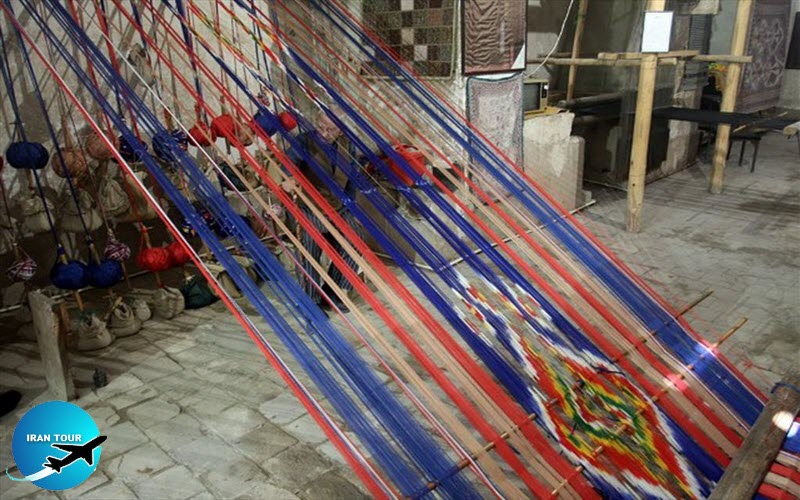Copyright 2020 - 2021 irantour.tours all right reserved
Designed by Behsazanhost
Yazd Handicrafts
Yazd Handicrafts
Although nature is less generous with the dese people here always persevere in their efforts to bring me a vivacity, our ancestors began working in hot sunshine to create life. The architectural masterpieces all recount the story o diligent people who never abandoned their work even if the weather was not favorable. Yazd is a perfect example of the genius and creativity of desert people in the face of a harsh nature. The patient and intelligent people of this region have learned throughout history to resist hardships and build the best possible life from the current situation. Yazd province boasts a valuable collection of the cultural heritage of Iran dating from various periods of historical times.
As a result of this continuous effort, many handicrafts and related arts have been preserved in this city and have been passed on to the next generations. The people here learned to make their own houses, their own clothes, and their own carpets. Not long ago the loom was found in every house. The skill was handed down from generation to generation, so the family business and economy played an important role in their lives. Although the number of people who take interest in their family professions reduces, Yazd always comes top in producing bedcovers, blankets, prayer rugs, shawl, silk handkerchiefs, velvet, "Terme" and "Daraie", now we introduce some of the unique handicrafts made in Yazd.
Among prominent characteristics of these products are original designs, novel coloring, artistic creativity of artisans, the limited investment needed as well as having some features of the local culture which has a prominent place in the world of art and economy. A number of these industries are as follows:
 |
Daraie
Yazd is a premier Daraie-weaving center in Iran, it is a kind of soft silk fabric with gorgeous colored diamond shapes on it. The wards are always dyed before weaving. As the weaver makes the fabric, the colors and designs gradually appear. Daraie was made out of natural silk, but nowadays viscose is usually used.
Knot-making
It is one of the oldest artworks in the field of carpentry. A network of patterns and designs is made on the wooden doors, then the pieces of stained glass are set in them. The city of Yazd is world-famous for creating the unique artwork of Knotmaking.
 |
Terme
"Terme" is a gorgeous silk fabric whose warp is silk thread and its pick is colorful silk, cotton, and wool thread. In the olden days, people made Terme with the help of their fingers, that is why Terme was known as "finger-woven fabric". This gorgeous soft fabric is world-famous for its patterns, especially an aigrette-like design (Bote), tuft-like design (Jeghe), hart's horn design (Shakh-e Gavazni), and rose-like design (Gol e Mohammadi). The city of Yazd is renowned for its 400-year-old industry of Terme-weaving.
 |
Pottery and Ceramics
Pottery, the oldest hand-made artwork, has a 6000 years old history in Iran. Local people call the earthenware"kevare" made out of clay. The earthenware is world
The earthenware is world-famous for its designs especially "fish” "the lady sun” and “the hen". Meybood is a prominent pottery-producing center in Yazd province.
 |
Tile Making
The picturesque tiles used to adorn the architectural masterpieces have a 700-year-old history in Yazd, the industry came into being in a city renowned for its magnificent buildings. The artist first prepares the desired patterns, paints and glazes them, finally puts them in the kiln, and bakes them. The world-famous designs are: Yazdi tiles, six-angled tiles, marginal tiles, seven-colored tiles, Akmand tiles, and Jouk tiles.
 |
Hand-Hooked Rug (Kilim and Zilou)
Zilou is made out of cotton thread, featuring some gorgeous patterns. The rugs vary in colors like red, orange, and sometimes green. Meybod is a premier rug-producing center. The history of rug-making here dates back to the pre-Islam era. The best type of Zilou is called Naftal.
Blacksmithing
The experienced blacksmiths in Yazd provide people with the ordinary tools they need such as pliers, hammers, knives, steelyards and so on. Mehriz, Aqda, Nodoushan, Sakhvid and Khezr Abad are the premier centers of blacksmithing.
 |
Mazari
It means herbal medicine seller and perfumer. Before the advent of modern science in the medical and industrial fields, the use of herbs was considered as one of the main methods of fighting disease, as well as making natural colors for industrial purposes. Since the main production of Mazaris in Yazd is henna, the name is actually associated with henna grinding. Henna is a green powder obtained by grinding the leaves of the henna plant. In fact, in Yazd, only the profession that prepares henna and madder (mascara) and similar materials is called Mazari.
- Details
- Category: Yazd Tourism